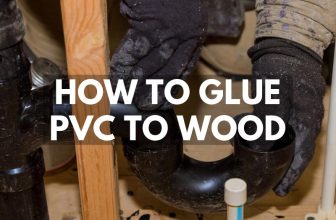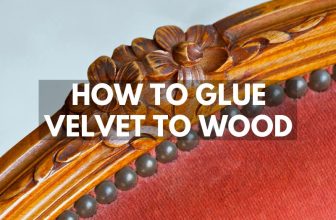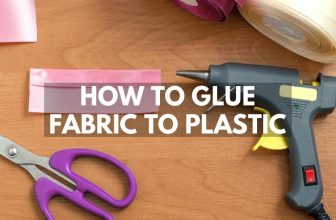
How to Glue Ceramic to Wood
You have a new project idea and need to know how to glue ceramic to wood using the best adhesive for the job. Polyurethane is an ideal adhesive for attaching ceramic to wood because it expands to fill any gaps, creates a strong bond, dries clear, and is waterproof so you can use it for indoor or outdoor projects.
Ceramics subjected to repeated stress and wear can slide and cause cracks or chips if the placement is not secure. Choosing a suitable glue is essential because it will determine how well the materials stick together. You have the choice between permanent, semi-permanent, and temporary adhesives however for the sake of simplicity we will look at the strongest and most permanent options. For oily woods like teak, you need more preparation than with standard building woods.
No matter what project you are working on, there is a glue that will hold it together with just the right mixture of strength and flexibility. Dry time is a significant factor if you intend to glue ceramic over a large area of wood. Some adhesives dry quickly, and you will need to choose one that gives you enough time to set everything in place before it begins to harden.
What Glue Can You Use for Ceramic to Wood?
Wood is a very porous material, and glazed ceramic is nonporous, making it important to choose an adhesive that will work well with both types of material. Each glue has advantages and disadvantages depending on your finished goal for the project. If you are trying to make something that will last over time, it takes adhesive that is slightly more durable, while temporary projects work with most types of glue.
Epoxy Resin
Epoxy resin creates a strong bond between wood and ceramic. However, it can become brittle under stress as it hardens and may not be the right choice for some projects like gluing ceramic tiles over wood flooring. In addition, epoxy resin adhesive can take a long time to cure in high or low temperatures and works best in room temperature environments.
Polyurethane Adhesive
Polyurethane adhesive is the best option for gluing wood to ceramic. It is flexible, strong, weather-resistant, and cures relatively quickly while still giving you time to make minor placement adjustments. Polyurethane glue works especially well on wood because it is absorbed into the pores where it can expand however it doesn’t have quite as strong of a hold on ceramic tiles.
Silicone Adhesive
Silicone adhesive does not work as well under stress and can take longer to cure. Although it is very flexible, silicone can react negatively to the prolonged presence of water or dampness, especially in extreme weather conditions, so it does not work well for outdoor projects involving wood and ceramic.
How to Prepare Ceramic and Wood Before Gluing
The ceramic will bond better to wood if it is not glazed, but the glazing does protect against dirt and other debris getting into the porous material. The best way to prepare both materials is by cleaning them thoroughly and making sure they are completely dry before applying any adhesive.
Quick Tip: Some adhesives like polyurethane have very little repositioning time before the glue begins, so you need to carefully plan where you want everything to go before applying it. Always check the product details to determine exactly how long it takes to set and how long you should wait before placing the two materials together.

How to Apply Glue for Wood and Ceramic
Spread the adhesive evenly over the surface of the wood and then apply the ceramic, making sure to secure it into place using gravity, clamps, or weights. For the best result, always follow any additional instructions provided by the manufacturer.
How to Cure Ceramic to Wood Glue
The glue will cure best in a dry area at room temperature. A slight breeze from a fan or opening can help speed up the dry time but may introduce contaminants like dirt and dust, so only use these if the project’s surface is covered.
Be careful not to clamp too tightly, as some thinner ceramic can chip or crack if put under extreme pressure. In cases where you need to use clamps, make sure they are secure and keep the ceramic flush against the wood. Weights or clamps should be applied evenly to ensure a strong bond over the entire area where both materials touch.
Conclusion
Polyurethane adhesive makes the best option for gluing wood to ceramic. You want to ensure that you do not apply too much pressure while securing the ceramic making into place. Indoor and outdoor projects benefit from drying in an area that is not subjected to extreme weather, so anything you work on outside may require some cover during the drying process.










